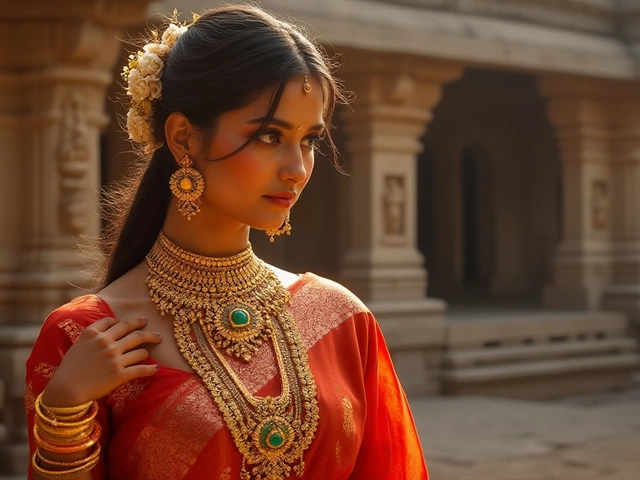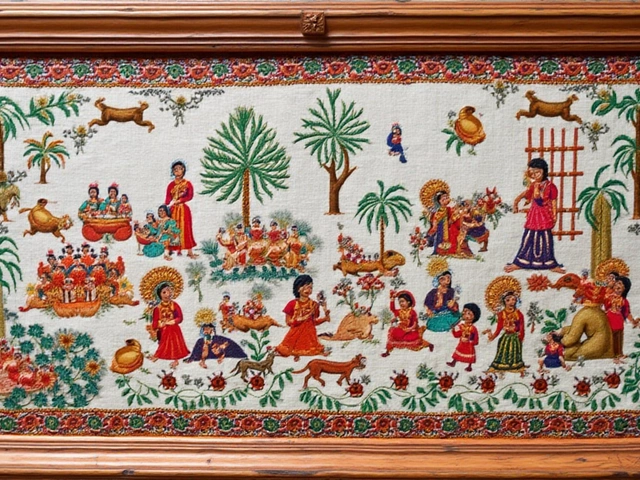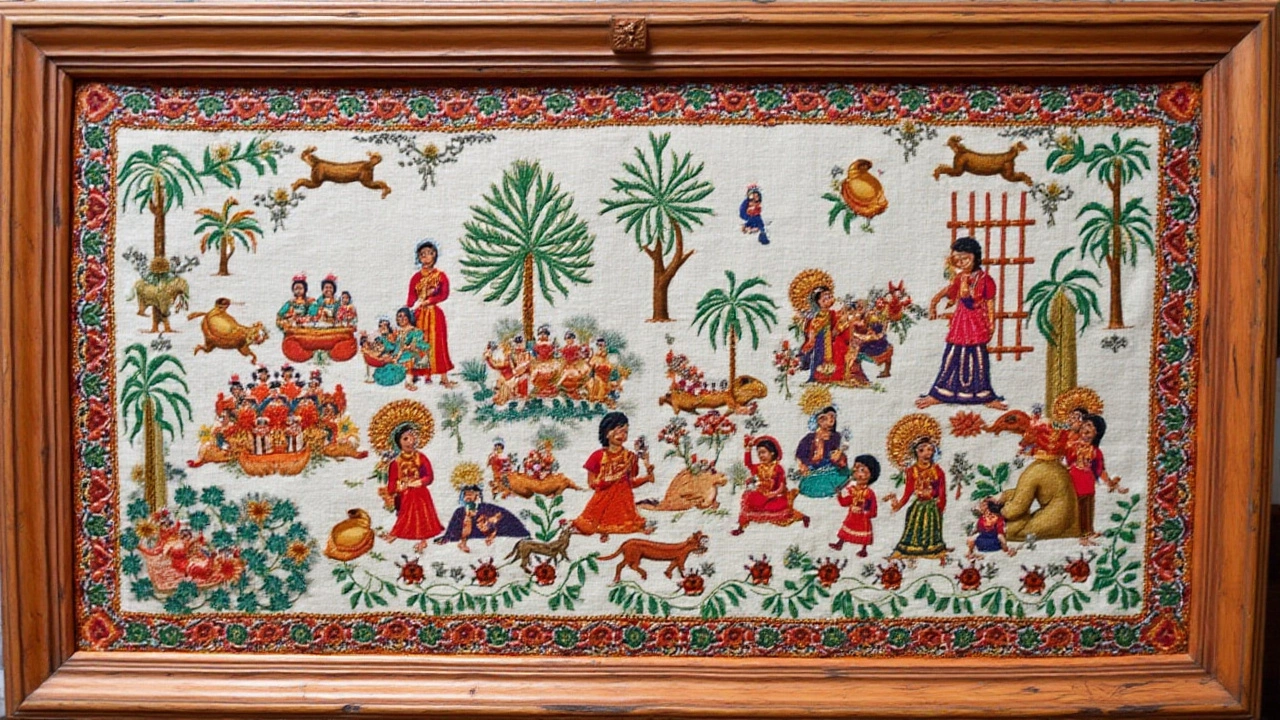
Sujni and Kantha are two mesmerizing forms of embroidery that have enthralled artisans and admirers alike. These age-old crafts are deeply rooted in Indian culture and offer a rich tapestry of history and tradition. Each stitch tells a story, making these textiles not just pieces of art, but woven narratives.
Sujni, originating from the rural landscapes of Bihar, is more than an embroidery technique; it’s a medium of storytelling. The motifs and patterns are inspired by day-to-day life and often depict folk tales, making each piece unique and reflective of the local culture.
On the other hand, Kantha, which hails from West Bengal, is celebrated for its simplicity and versatility. Traditionally crafted from old sarees and cloths, this technique breathes new life into worn fabrics, transforming them into artistic expressions. Its intricate stitching creates elaborate designs that are as practical as they are beautiful.
Both Sujni and Kantha have evolved over the years, adapting to modern tastes while preserving their authenticity. A closer look at these crafts reveals much about the regions they come from and the people who create them.
- Origins and History of Sujni
- The Art of Kantha Embroidery
- Techniques and Methods
- Cultural Significance
- Contemporary Uses and Variations
- How to Choose Between Sujni and Kantha
Origins and History of Sujni
Sujni embroidery has its roots deeply embedded in the rural communities of Bihar, India, a state rich with historical significance and cultural vibrancy. The story of Sujni embroidery dates back centuries, forming an intrinsic part of the social and economic fabric of the region. Initially crafted as a utilitarian necessity, Sujni was predominantly a woman's craft, born from the need to reuse and repurpose old textiles. Women took on the task of sewing together layers of old sarees and dhotis, transforming them into quilts to keep their families warm during the cooler months. But Sujni soon evolved from mere necessity to an elaborate art form, reflecting tales of tradition and community life.
The narrative quality of Sujni is unparalleled, as it often embroidered stories onto cloth, serving as a medium to express daily life, folklore, mythology, and even social messages. With each stitch, the women articulated their surroundings, beliefs, and aspirations. Historical references suggest that the use of red and black threads on a white background was not only a stylistic choice but also imbued with cultural meanings, signifying life and death, auspiciousness, and purity, respectively. Over time, Sujni has bridged the gap from being a domestic craft to an art form deserving of national and international recognition, appreciated for both its aesthetic beauty and cultural storytelling.
Despite its rustic origins, Sujni has witnessed a renaissance in contemporary times. This revival is partly credited to local and international artisans' and designers' efforts to preserve and promote traditional crafts. They are setting up cooperatives, training the new generation, and integrating Sujni into modern fashion and home decor items, allowing the craft to survive and thrive in global markets. A significant movement towards recognizing and valuing the artisanal inputs has also contributed to its resurgence. In the words of a renowned textile historian, "Embroidered in every Sujni stitch is a piece of living history that speaks of women's resilience and artistic prowess."
The rediscovery and promotion of Sujni have not only opened economic routes for artisans but also ensured the cultural narratives continue to be woven into the fabric of modern life. Successful collaborations between traditional artisans and contemporary designers are breathing new life into this ancient craft, allowing it to appeal to diverse audiences while retaining its intrinsic storytelling essence. The craft’s adaptation to new markets, without losing its emotional and cultural depths, is nothing short of exemplary, demonstrating the timeless beauty and versatility of Indian textiles.
The Art of Kantha Embroidery
Kantha embroidery, a cherished tradition from the heart of West Bengal and Bangladesh, has transcended time to become an emblem of cultural expression. This delicate and intricate form of needlework is as much about resourcefulness as it is about beauty. Women of rural Bengal have crafted Kantha pieces for centuries, transforming old saris and discarded cloth into stunning quilts, wraps, and more. The art form is known for its simple running stitch, which, despite its simplicity, creates an array of patterns that tell stories of life, spirituality, and natural beauty.
The transformation of old, worn-out fabrics into pieces of art reflects a philosophy of reuse and sustainability intrinsic to Kantha. As you hold a piece of Kantha work, you're not just appreciating its aesthetic beauty but partaking in a narrative woven through generations. Each piece is unique, encompassing designs that range from geometric and floral motifs to more abstract forms and narrative scenes. Traditionally, these motifs include plants, animals, celestial bodies, and daily life symbols that hold deep personal or cultural significance. The use of the running stitch across layers of fabric not only serves a decorative purpose but also strengthens the material, showcasing the practicality entwined with artistry.
"Kantha is like a living testament to the ingenuity and creativity of the women who craft it, blending art with daily life," said textile historian Anjali Devi.
Beyond the aesthetics, Kantha embroidery holds a profound place in the social fabric of Bengal. It acts as a medium for women to express themselves, passing down stories from one generation to another, often with no verbal narrative required. Women gather to work on these quilts, sharing life stories, thereby intertwining their personal experiences within the stitches. In this way, Kantha becomes a silent witness to the changing social landscape, documenting everything from spiritual beliefs to local legends.
Kantha pieces are versatile and have evolved with time. Contemporary designers often incorporate Kantha into mainstream fashion, including dresses, scarves, and even modern home decor items. The growing interest in sustainable fashion has highlighted the antiquity of Kantha, with its eco-friendly roots striking a chord with environmentally conscious consumers. Textiles crafted with Kantha embroidery have been celebrated in exhibitions globally, reflecting the technique's expanding influence and appreciation.
In a revitalized form, Kantha has inspired numerous designers, bringing a piece of Bengali heritage to the international stage. As you explore the art of Kantha, it invites you into a world where each stitch is not only a technical element but a bridge between past traditions and present innovations. Embracing both its historical significance and modern adaptation provides a glimpse into the compelling journey of Kantha and continues to capture the imagination of craft lovers worldwide.
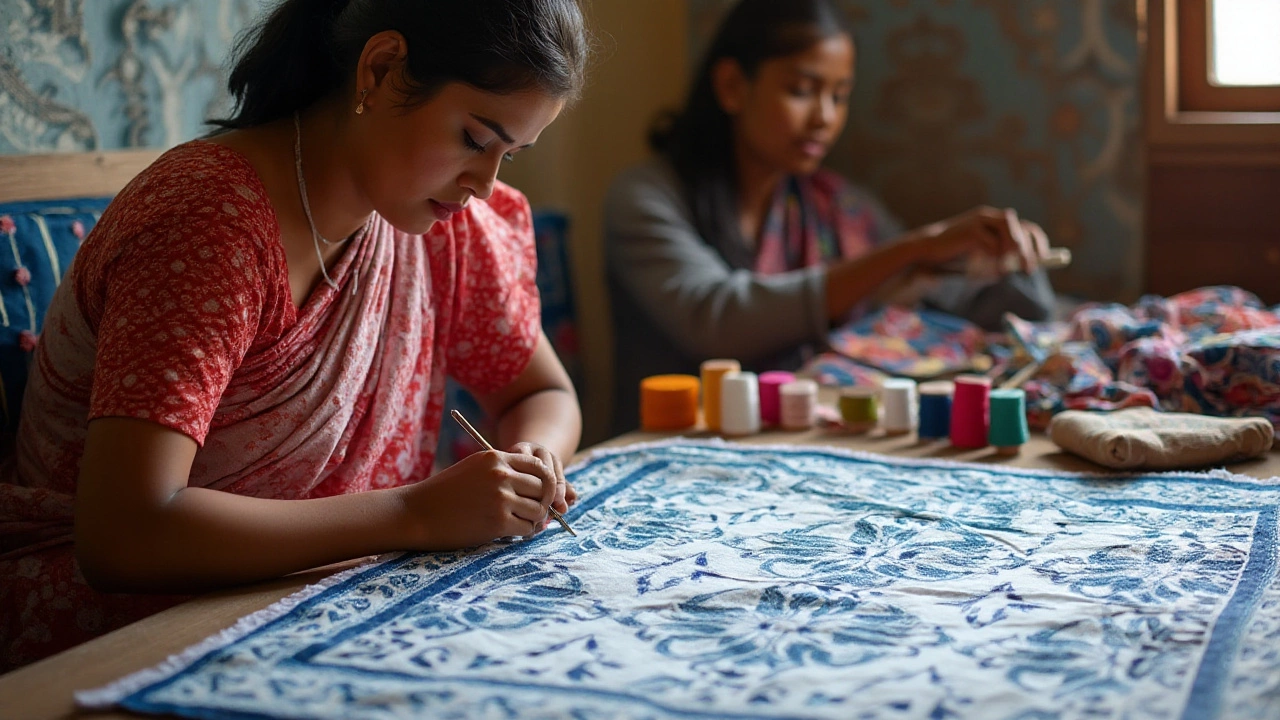
Techniques and Methods
In exploring the nuanced art forms of Sujni embroidery and Kantha embroidery, one must delve into the distinctive techniques and methods that define them. At their core, both styles share a handmade essence, yet the execution varies greatly, allowing each to maintain its regional identity while captivating the imagination of artisans and admirers.
Starting with Sujni, this technique is renowned for its use of running stitches, which create soft textures and often act as a narrative thread throughout the fabric. This embroidery generally begins with an unadorned base cloth, typically in natural tones. Artisans use vivid colored threads to outline complex patterns, often rooted in local folklore and symbolic motifs, like flowers, animals, or scenes from everyday life. The process is meticulous, where each stitch requires both time and dedication, ensuring every piece tells a distinct story. Traditional designs may even incorporate elements that reflect current societal or personal narratives, adding layers of meaning and emotion to the work.
Kantha, on the other hand, while also using a running stitch as its central technique, distinguishes itself through its quilting methods. This traditional craft involved reusing old saris or dhotis, which are folded, layered, and quilted, thereby producing richly textured and remarkably durable quilts and garments. The stitching is dense and sometimes arranged into intricate geometric patterns or more fluid, organic shapes. Each piece can take several weeks to several months to complete, depending on the complexity of the design and the skill of the artisan. The stitches used in Kantha embroidery do more than just secure layers together; they add depth and visual intrigue, often transforming simple cloths into visually stunning pieces.
Interestingly, the charm of both Sujni and Kantha lies in their imperfections. These pieces are celebrated for their authenticity, where each anomaly in the stitching speaks to the human element behind the craft.
"Artisans imbue their work with a part of themselves," reflects textile historian Sharon Irwin, "We see their joys, their struggles, and their stories in every stitch."Such personal touches make each piece truly unique and imbued with a cultural richness that machines cannot replicate.
In observing these two forms of embroidery, one learns to appreciate the subtle differences rooted not just in technique but also in purpose and presentation. Though both bear testament to India's rich textile heritage, Sujni and Kantha showcase how regional variations in technique produce pieces that are not just ornamental but function as cultural storytellers. It is this blend of artistry, narrative, and utility that continues to inspire contemporary designers and keeps the traditional craft thriving in today's world.
Cultural Significance
The cultural tapestry of India is as intricate as the stitches that embroider Sujni and Kantha textiles. These crafts are not merely decorative art forms but serve as profound expressions of cultural identity and social history in their respective regions. In the villages of Bihar and West Bengal, these embroideries encapsulate the essence of local life, often acting as a canvas where tradition and storytelling coalesce.
Sujni embroidery, with its origins in the rural heartlands of Bihar, is steeped in history and cultural narratives. Traditionally, this form of embroidery was associated with marital rituals and household prosperity. Women would spend countless hours creating exquisite Sujni pieces, showcasing scenes from local folklore, mythological epics, and spiritual motifs. These works were more than just for adornment; they were talismans believed to bring good fortune and dispel negative energy.
"Sujni is not just a stitch on cloth; it is the embroidered history of the Mithila women," remarked cultural historian Dr. Ranjana Choudhary, highlighting its significance in traditional society.
Kantha, hailing from the creative landscapes of West Bengal, tells a different story, yet its importance to the cultural heritage remains profound. This craft reflects a sustainable aspect of Bengali life, where the art of turning old saris into new quilts or garments has been passed down through generations. The motifs in Kantha often include nature-inspired elements, religious symbols, and scenes of everyday life, embodying the hopes, dreams, and philosophies of the artisans. Its sustaining quality was particularly significant during times of economic hardship, where necessity gave rise to creative resourcefulness.
Both forms of embroidery have been instrumental in empowering women, providing them with a means to support their families financially. Through organizations and cooperatives, the crafts have gained global attention, allowing artisans to showcase their work on larger platforms. This not only preserves these traditional crafts but also brings much-needed economic benefits to the communities involved. A testament to their cultural importance, Sujni and Kantha embroidery continue to inspire contemporary designers, blending traditional motifs with modern aesthetics, thus keeping the art alive and relevant in today's fashion industry.
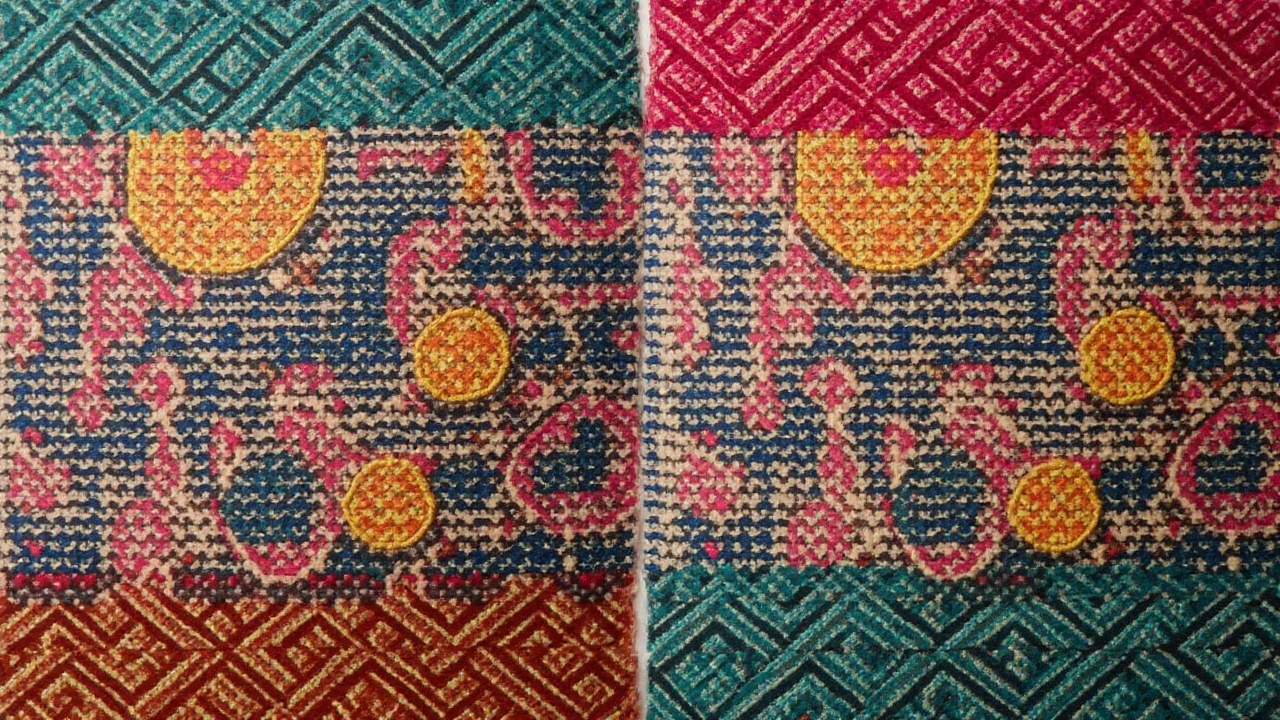
Contemporary Uses and Variations
In today's world, the timeless elegance of Sujni embroidery and Kantha embroidery continues to captivate fashion and design enthusiasts around the globe. Both these traditional arts have gracefully transitioned into the modern era, finding an esteemed place not only in traditional wardrobes but also in haute couture collections and contemporary design spaces. The global appreciation for sustainable and handcrafted textiles has further propelled these crafts into the limelight, making them an integral part of discussions around ethical fashion and cultural preservation.
Sujni, with its narrative threads that tell stories of life in rural Bihar, has seen a renaissance of sorts. Modern designers have embraced its potential for storytelling, using it to create bespoke pieces that reflect not just heritage but also personal narratives. These embroidered works have found their way into high-end fashion, home décor, and even into art installations, where the intricate motifs can tell a thousand words on sprawling canvases. The technique is being reinvented to suit contemporary tastes, with Sujni patterns adorning everything from cushion covers to jackets, seamlessly blending traditional aesthetics with modern functionality.
Kantha's appeal lies in its simplicity and versatility, making it a favorite among those looking to combine elegance with ecologically responsible choices. This ancient recycling artistry, which began as a way to upcycle worn-out textiles, is now a staple in modern sustainable fashion. Kantha's ability to transform old fabrics into new masterpieces has given rise to innovative uses in product lines, ranging from clothing to accessories to interior furnishings. The minimalistic beauty of Kantha designs lends itself to an array of products that fit into contemporary lifestyles, with even international luxury brands incorporating this traditional stitch into their collections.
Interestingly, Kantha’s reach has expanded into global markets where the appreciation for such handcrafted quality is rising. Designers and consumers alike are drawn to its unique ability to impart a sense of history and individuality into every piece. This has not only revived the fortunes of artisans in West Bengal but also brought to the fore discussions about the importance of sustaining such crafts for future generations. A telling observation regarding the importance of preserving these artisanal crafts comes from a feature in Vogue India, where a designer notes,
"In every stitch of Kantha, you feel the rhythm of heritage and the heart of its maker."
The resurgence and innovation in these crafts are not limited by geography. With digital platforms promoting artisanship, Sujni and Kantha have accessed global audiences, thereby encouraging cross-cultural collaborations. As more designers experiment with these techniques, the ways in which Sujni and Kantha are incorporated continue to evolve. Whether used as embroidery on a modern silhouette dress or as a statement piece on a new-age quilt, these crafts are demonstrating their adaptability and enduring appeal.
To further underline their growing versatility in contemporary times, it's noted that about 65% of new design labels that integrate traditional techniques now export their works worldwide, as reported by the Textile Industry Association. This showcases the universal charm and adaptability of such heritage crafts. The key lies in innovation while respecting tradition—a balance that both Sujni and Kantha artisans are masterfully striking as they navigate the demands of modern consumers.
How to Choose Between Sujni and Kantha
When it comes to choosing between Sujni embroidery and Kantha embroidery, understanding your personal aesthetic preferences and intended use is essential. Sujni often appeals to those who appreciate storytelling through textiles, as it traditionally features narrative motifs drawn from everyday life and folklore. This makes it ideal for wall hangings and decor pieces that aim to convey a cultural or historical narrative. If your interest in textiles is guided by a love for detailed storytelling and you wish to showcase pieces that echo tales of yore, Sujni might be your preferred choice. On the other hand, its history rooted in the efficient use of available resources also speaks to those who value sustainable craft practices.
Kantha, in contrast, might be more suitable for those who favor utility paired with artistic expression. Known for its intricate needlework and versatility, Kantha can be used to create clothing items, quilts, and other household textiles. This adaptability is coupled with the craft’s history of repurposing fabrics, originally from worn-out saris and dhotis.
"Kantha truly brings a new life to old fabrics, weaving a sense of recycled luxury," says textile historian Martha Duggan, highlighting its sustainable and artistic essence.The delicate stitchwork, often geometric or floral, has a subtle beauty that can blend into modern interiors or fashion with equal ease. Its diverse applications make it appealing to those who desire both form and function in their textile choices.
Consider also the complexity and type of design that might suit your taste. Sujni’s motifs often employ running stitches that create detailed, narrative-rich designs. This technique can result in textiles with significant weight and texture, providing a grounded, rustic look. The dense weaving on Sujni pieces often requires a keen eye for detail and appreciation for its cultural and artistic depth. Conversely, Kantha’s lightweight stitching can offer a softer, more fluid appearance. Whether you look to revitalize vintage fabrics in your wardrobe or your home, Kantha can subtly transform items with its intricate yet understated detailing.
If decision-making requires a practical approach, think about the care and maintenance each type requires. Sujni, with its heavier compositions and intricate patterns, may need more careful handling and preservation to maintain its striking beauty over time. Kantha stitches are generally more robust and forgiving, often allowing for easier laundering and everyday use. This makes Kantha a favorable option for those who prefer low-maintenance textiles that remain stylish and durable in use.
Finally, your choice may also be influenced by the cultural and ethical considerations associated with each form. Sujni collectors often support artisan communities in Bihar who strive to keep this traditional craft alive, providing them with crucial economic opportunities. Likewise, investing in Kantha also supports the artisan communities in West Bengal and helps to promote sustainable practices in textile production. Both types of embroidery are not just stunning embellishments but are deeply entwined with the socio-economic fabric of their regions, beckoning an investment that carries cultural significance.
